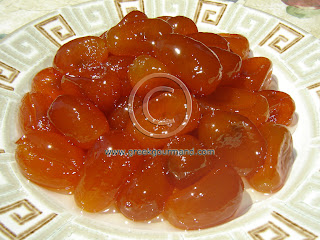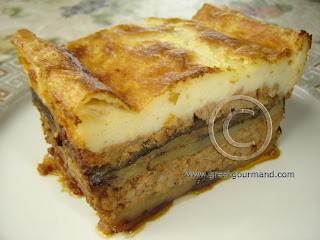A Kumquat Sweet for Your Thoughts (Κούμκουατ Γλυκό)

A Kumquat Sweet for Your Thoughts – Click to Enlarge I was first introduced to this exotic Greek confection in the late ‘90s. One of my friends had gone to Greece for the summer and had returned with several packages of individually wrapped kumquat sweets , an exclusive specialty of the Ionian island of Corfu (Kerkyra). Though I was already familiar with Corfiote (i.e. of Corfu ) kumquat liqueur, I had never tried the glacé fruit until my friend, Kyriakos, generously shared some of his supply with me. Needless to say, I was immediately hooked. The subtle orange citrus bitterness of the fruit’s tender though slightly chewy translucent flesh was totally suffused with the sweetness of its sugar syrup and was simply irresistible. Interestingly enough, not long after that first sampling, I remember learning that upon completion of the filming on location in Greece for the James Bond movie “ For Your Eyes Only ” (1981), Roger Moore left Greece with several suitcases stuffed fu




